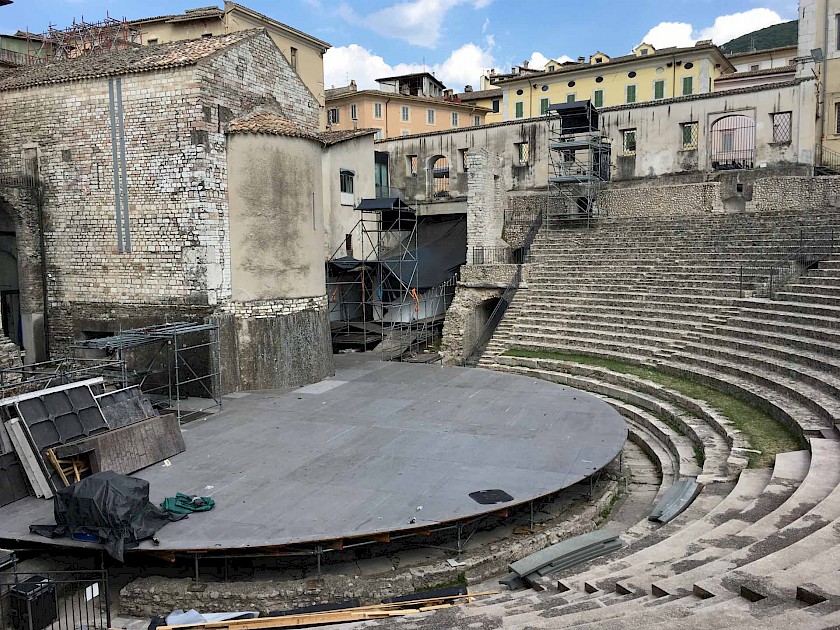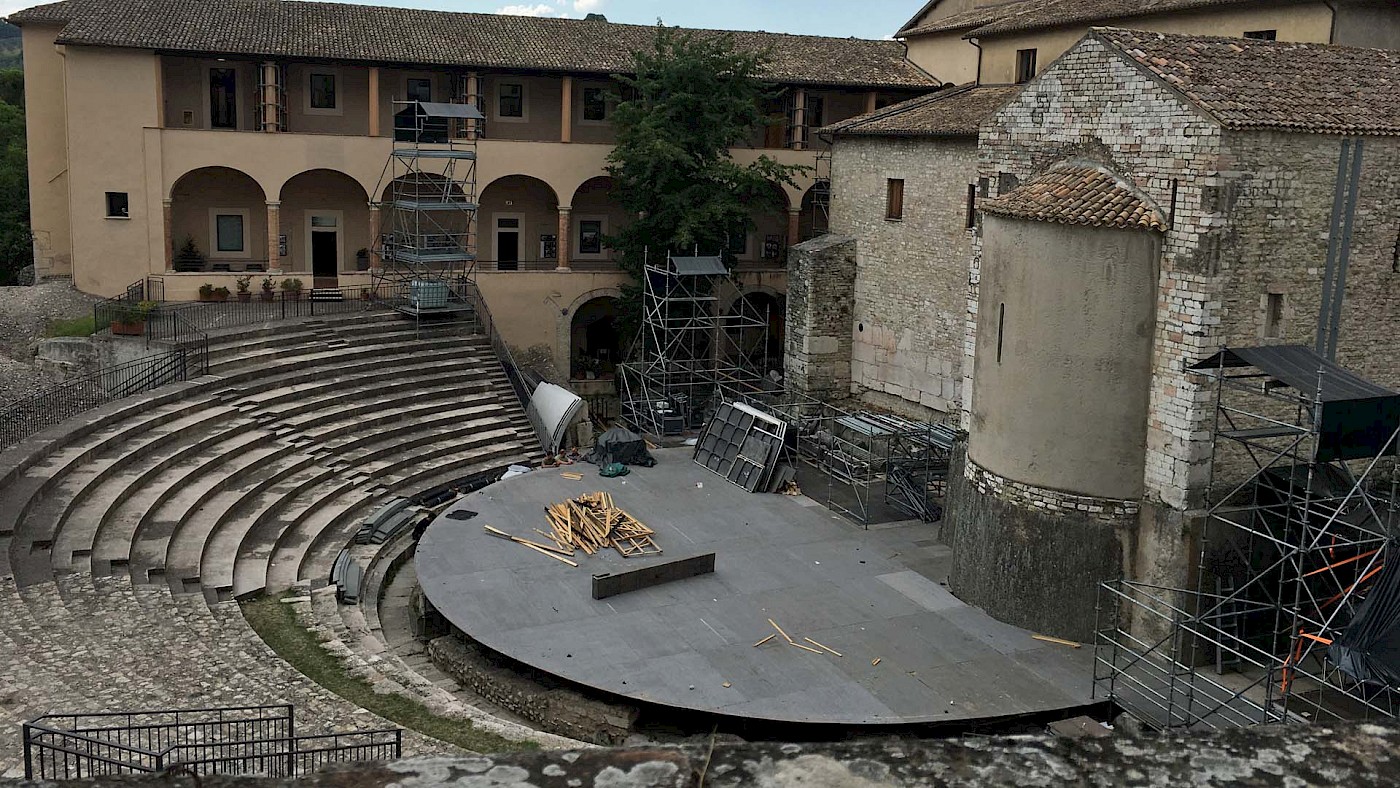As you enter the centre of Spoleto from one of the town’s parking lots, you are likely to pass by a wall with a gate, beyond which you can see a rather typical example of a Roman theatre. Semicircular in plan, with a diameter of ca. 70m, the theatre features an orchestra pit with seats arranged around it in rows, with one row higher than the other as you get further away from the pit.
The Romans adopted this type of structure from the Greeks, but made some changes. Greek theatres tend to be slightly more than semicircular in plan, but Roman theatres occup a strict half cicle. Greek examples are typically built against slopes or hills, but the Romans didn’t let the natural landscape dictate where to construct their buildings.
The theatre at Spoleto dates from the middle of the first century BC and is built on a large artificial terrace. The oldest parts of the theatre were made from opus caementicium or Roman concrete and blocks of local limestone and bricks. Later, restorations were carried out in brick and opus reticulatum (tuff bricks pushed into concrete).
Like most other Roman theatres, the one in Spoleto has its seats grouped into three horizontal sections or cavea. Closest to the pit is the ima cavea, reserved for the community’s elite. Directly above is the media cavea, which was open to the general public. Women and children were usually seated further away, in the summa cavea.

Located underneath this theatre’s summa cavea is a vaulted passageway, with three vomitoria (passages) opening onto the somewhat broader walkway that separates the summa cavea from the media cavea. Stairs (scalae) divide the middle and upper caveae into sections referred to in Latin as cunei, the plural of cuneus, meaning “wedge”.
The theatre originally featured marble sculptures and reliefs. Among these, two busts have been unearthed, of which one is believed to represent Rome’s first emperor, Augustus, and the other is possibly his adoptive father, Julius Caesar. The reliefs and statues most likely decorated the wall of the stage, which was destroyed to make space in the Middle Ages for the construction of the Sant’Agata monastery and church.
Statues and reliefs from the theatre are on display in the archaeological museum, along with an assortment of other objects unearthed in the town and surrounding region. While relatively small, it’s definitely worth a visit.
